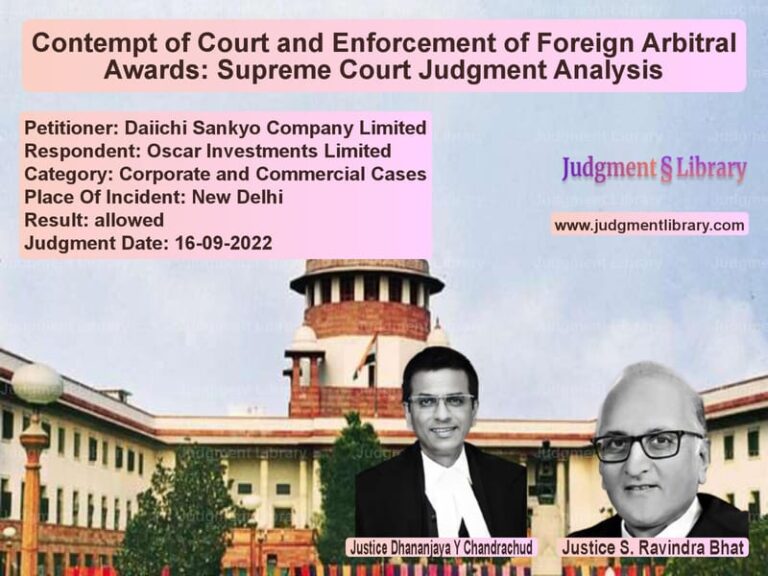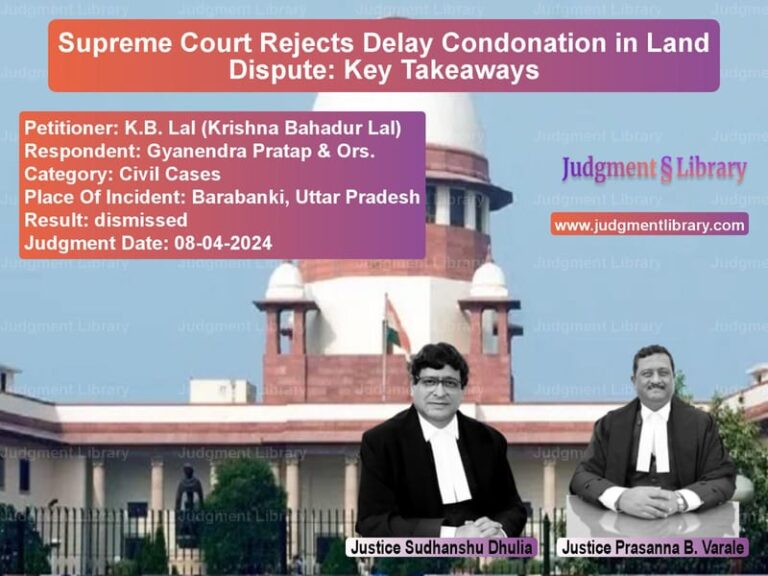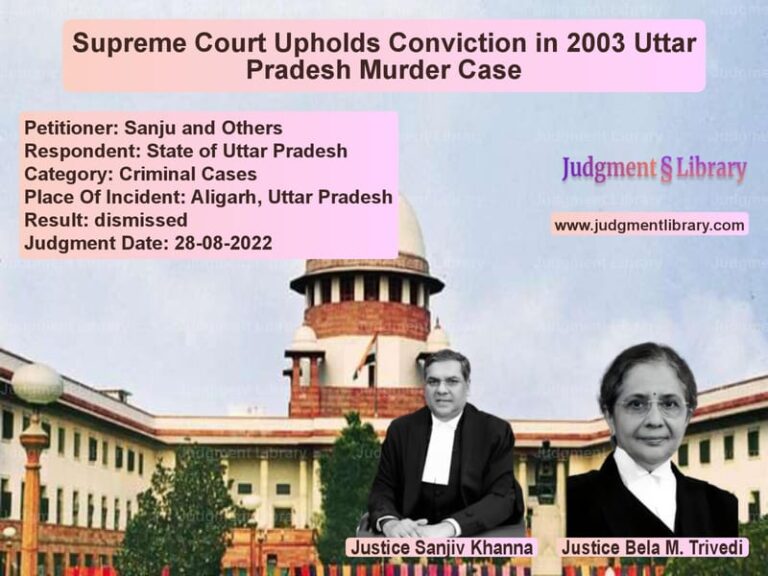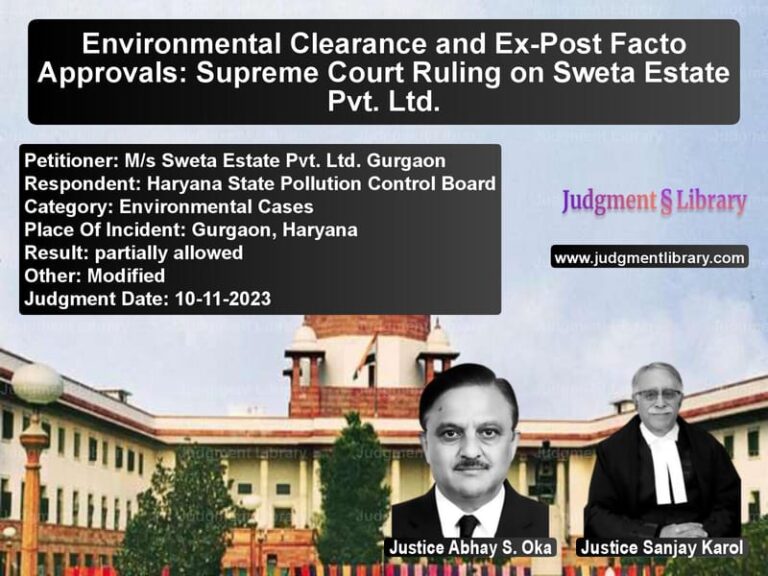Supreme Court Overturns Conviction in Himachal Pradesh Murder Case
The Supreme Court of India recently delivered a crucial verdict in the case of Harvinder Singh @ Bachhu vs. The State of Himachal Pradesh. This case revolved around a murder conviction that was initially overturned by the trial court, later reinstated by the Himachal Pradesh High Court, and finally challenged before the Supreme Court. The ruling underscores the principles of evidence assessment, the role of circumstantial evidence, and the significance of witness testimony.
Background of the Case
The case originated from an incident that took place on June 17, 2003. According to the prosecution, PW1, a witness, heard the victim crying for help and ran towards her house. On arrival, he allegedly saw the accused Harvinder Singh and a co-accused (since deceased) exiting the premises, with Harvinder’s shirt stained with blood. The victim was later found inside, half-naked and lying in a pool of blood. The investigation led to the arrest of Harvinder Singh and the recovery of alleged stolen jewelry.
The case was initially heard by the Additional Sessions Judge (Fast Track Court), Solan, Himachal Pradesh. The trial court, after thoroughly analyzing the evidence, acquitted the accused, citing inconsistencies in witness testimonies and lack of conclusive forensic evidence. However, the Himachal Pradesh High Court overturned the acquittal and sentenced Harvinder Singh to life imprisonment, holding that the circumstantial evidence sufficiently established his guilt.
Issues Raised Before the Supreme Court
Harvinder Singh challenged the High Court’s ruling before the Supreme Court, arguing that:
- The High Court erred in disregarding the trial court’s findings.
- The prosecution failed to provide conclusive forensic evidence linking him to the crime.
- The testimony of PW1 was unreliable due to inconsistencies.
- The police investigation was flawed, including the failure to examine key witnesses.
Key Arguments by the Appellant
Harvinder Singh’s defense primarily relied on the following:
- Unreliable Witness Testimony: The key witness, PW1, claimed to have heard the victim calling for help but did not immediately intervene. Instead, he left the scene and returned later, raising doubts about his credibility.
- Lack of Direct Evidence: The forensic report did not conclusively establish that the blood on the accused’s shirt belonged to the victim. Additionally, the fingerprint report was absent.
- Failure to Examine Crucial Witnesses: The victim’s children and a neighbor were potential witnesses but were not called to testify.
- Illegal Arrest: Harvinder Singh and his co-accused were declared proclaimed offenders and arrested years later under dubious circumstances.
Arguments by the State (Respondent)
The prosecution, representing the State of Himachal Pradesh, countered by asserting:
- The presence of blood-stained clothing on the accused indicated involvement.
- The victim’s injuries and homicidal nature of death were well-established.
- PW1 had no reason to falsely implicate the accused.
- There was prior enmity between the accused and the victim’s husband.
Supreme Court’s Key Observations
The Supreme Court, after reviewing the case, made the following observations:
1. Reliance on Circumstantial Evidence Must Be Beyond Doubt
The Court reiterated that in cases based on circumstantial evidence, the prosecution must establish an unbroken chain of events pointing exclusively to the accused’s guilt. The judgment stated:
“Mere suspicion, however strong, cannot substitute proof. The prosecution must rule out every other hypothesis except the guilt of the accused.”
2. Contradictions in Witness Testimony
The Supreme Court found PW1’s statements contradictory and unreliable. The judgment noted:
“The behavior of PW1 was unnatural. After allegedly hearing the victim’s cries, he did not intervene or alert others immediately. This creates reasonable doubt about the credibility of his testimony.”
3. Non-Examination of Key Witnesses
The Court criticized the prosecution for failing to examine key witnesses, including the victim’s children, who were present at the house:
“Non-examination of material witnesses deprives the accused of a fair trial. The prosecution’s case cannot rest on selective evidence.”
4. Absence of Fingerprint Report
The Court found it unacceptable that fingerprint evidence was collected but never presented:
“The fingerprint report could have either implicated or exonerated the accused. Its absence raises serious doubts about the prosecution’s case.”
Final Judgment
Based on these findings, the Supreme Court ruled in favor of Harvinder Singh:
- The High Court’s order convicting the accused was set aside.
- The trial court’s acquittal was restored.
- The Court directed immediate release of the appellant unless required in any other case.
Implications of the Judgment
This ruling sets a significant precedent in criminal law, emphasizing:
- Importance of Witness Credibility: Courts must scrutinize the reliability of key witnesses, particularly when they provide the sole evidence.
- Strict Standards for Circumstantial Evidence: The prosecution must establish guilt beyond a reasonable doubt, ensuring no alternative explanation exists.
- Necessity of Fair Investigations: The failure to collect and present critical forensic evidence weakens the prosecution’s case.
Conclusion
The Supreme Court’s decision in Harvinder Singh @ Bachhu vs. The State of Himachal Pradesh reaffirms the fundamental principle that the benefit of doubt must always favor the accused. The judgment serves as a reminder that courts must prioritize fair trials and avoid convictions based on unreliable testimony or incomplete evidence.
Petitioner Name: Harvinder Singh @ Bachhu.Respondent Name: The State of Himachal Pradesh.Judgment By: Justice M. M. Sundresh, Justice J. B. Pardiwala.Place Of Incident: Himachal Pradesh.Judgment Date: 13-10-2023.
Don’t miss out on the full details! Download the complete judgment in PDF format below and gain valuable insights instantly!
Download Judgment: harvinder-singh-@-ba-vs-the-state-of-himacha-supreme-court-of-india-judgment-dated-13-10-2023.pdf
Directly Download Judgment: Directly download this Judgment
See all petitions in Murder Cases
See all petitions in Bail and Anticipatory Bail
See all petitions in Judgment by M.M. Sundresh
See all petitions in Judgment by J.B. Pardiwala
See all petitions in allowed
See all petitions in Quashed
See all petitions in supreme court of India judgments October 2023
See all petitions in 2023 judgments
See all posts in Criminal Cases Category
See all allowed petitions in Criminal Cases Category
See all Dismissed petitions in Criminal Cases Category
See all partially allowed petitions in Criminal Cases Category







